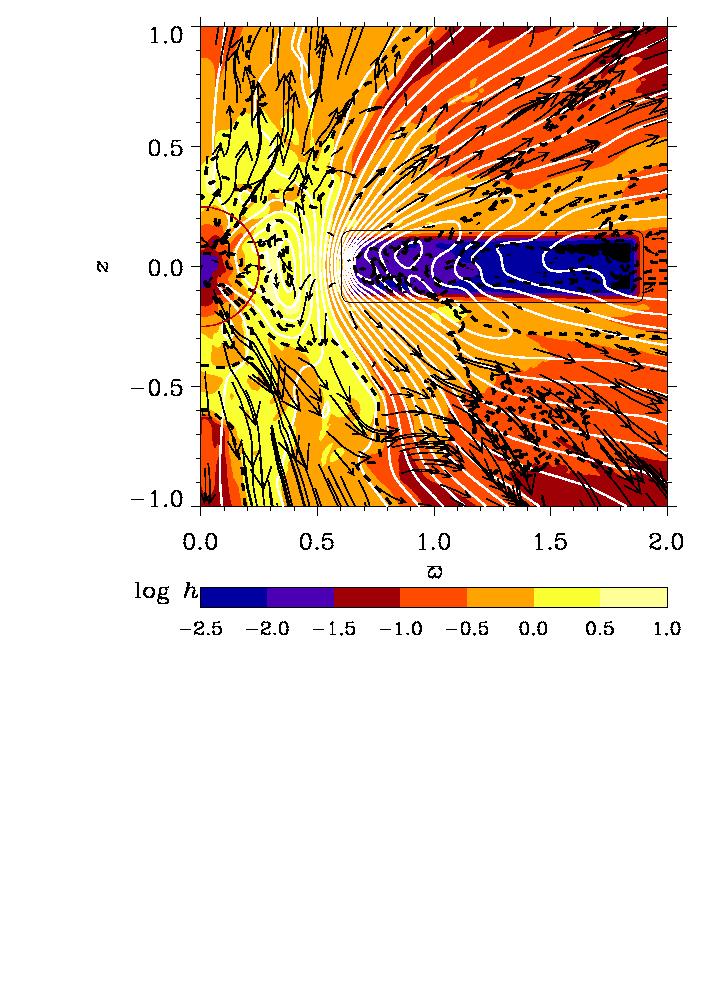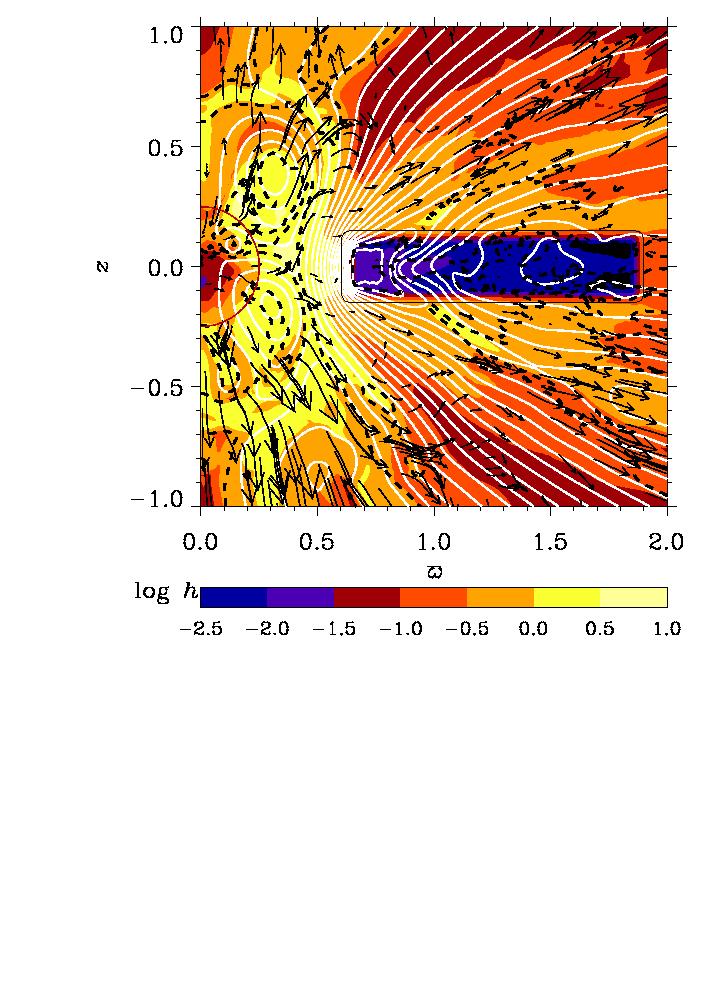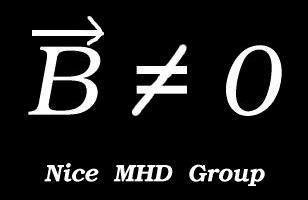Magnetohydrodynamic (MHD) simulations have been carried out of a
physical
model to study accretion processes and outflows in a global system
comprised
of a central object and a surrounding cool dense accretion disc
embedded in a hot rarefied corona.
The model is applied to a protostellar star--disc system. Both the star
and the disc have mean-field dynamo activity,
and these dynamos are considered to be the only mechanism for the
generation and
maintenance of the entire magnetic field in the star--disc system.
Using this magnetic dynamo model, the outflow structure and the wind
driving
mechanisms as well as the accretion flow and accretion rates are
studied.
In order to address the question of stellar spin-down or spin-up, the
accretion and magnetic torques exerted on the star are calculated.
The results of the axisymmetric numerical computations (cf. Fig.1) are
compared with first results obtained in three dimensions.
caption of Fig.1:
========================
Poloidal velocity vectors (black) and poloidal magnetic field lines
(white)
superimposed on a colour scale representation of log10(h)
at times of about 1171 days (LEFT/UP) and about 1183 days (RIGHT/DOWN).
Specific enthalpy h is directly proportional to temperature T,
and log10(h)=(-2,-1,0,1) corresponds to T approx. (3x10
3,3x10
4,3x10
5,3x10
6) K.
The black dashed line shows the surface where the poloidal velocity
equals the Alfv\'en speed from the poloidal magnetic field.
The accretion disc boundary is shown with a thin black line,
and the stellar surface is marked in red.
This is an axisymmetric model where the magnetic field is solely
generated and maintained by mean-field dynamos
that are active in both the star and the surrounding accretion disc.
The model is applied to a protostellar star--disc system.
The resulting symmetry of the disc dynamo generated magnetic field is
roughly dipolar whereas the stellar dynamo
generates a field that switches periodically with time between dipolar
(LEFT/UP) and quadrupolar (RIGHT/DOWN) symmetry.









